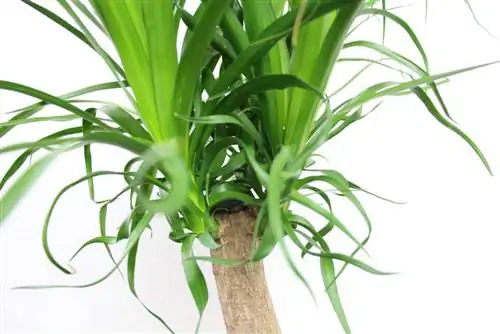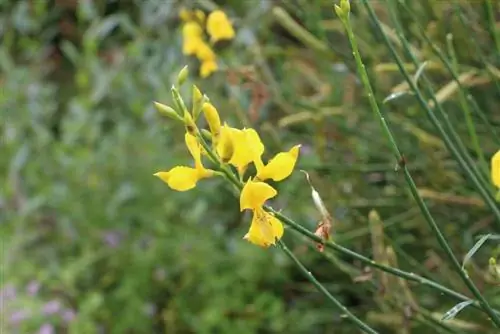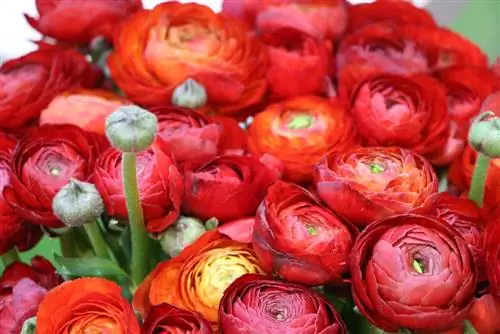- Author admin [email protected].
- Public 2023-12-17 03:39.
- Last modified 2025-01-24 12:45.
When raising snapdragons, it is now common practice to remove the plants after the end of the flowering phase and replace them with new young plants in the new year. But does that even have to be the case? How hardy is the snapdragon and how do you get it safely through the cold months? We will tell you all the important information about winter hardiness and wintering options.
Is snapdragon hardy?
Although this question can be clearly answered with yes or no for numerous other plants, when it comes to snapdragons the only general answer that can be given is “it depends”. Originally, Antirrhinum, the scientific name of the snapdragon, is a perennial and at least moderately hardy perennial. Anyone who is lucky enough to own such a specimen can, with a little effort, be assured of a rich display of flowers in the coming year.
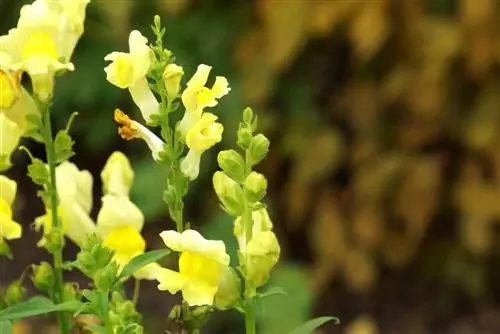
Many of the breeding forms offered today, however, are so-called F1 hybrids. They are bred exclusively for the goal of strong growth and enormous flower production. The lifespan is therefore usually limited to just one season anyway, so that the winter hardiness that disappears during breeding is no longer of great importance.
NOTE:
You can find out what type of snapdragon it is from your gardener. When purchased from a hardware store or gardening store, information about winter hardiness is usually included in addition to whether it belongs to the F1 hybrid.
Overwintering perennials
If you are lucky enough to actually have a perennial snapdragon in your garden, the chances of overwintering are usually very promising. These measures will help the plant overwinter safely until next spring:
pruning
Although many gardeners tend to remove faded and wilted plants from plants in the fall, pruning should not be done here. The dead leaves serve several functions in winter:
- Protecting the plant stem from wind and resulting frostbite
- Protection of the root area from intense ground frost
- Fallen leaves or leaves lowered to the ground as evaporation protection against drying out in winter winds
Cover
An extra layer of protection helps protect plants from the winter cold. The most important thing is to protect the sensitive roots while the above-ground parts of the plant sprout again in the spring anyway. Suitable materials for the protective cover are:
- Coconut mats
- brushwood
- Mulch
- Leaves
- Straw
ATTENTION:
Airtight covers, such as foil, should be avoided as much as possible. Although they also protect against evaporation and cold, moisture can build up underneath them and thus promote the formation of rot and mold.
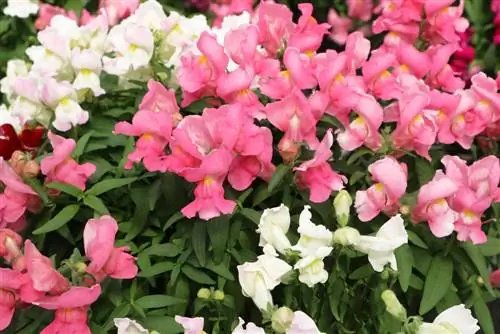
The covers can be applied regardless of whether they are planted in a bed or pot. For smaller pots, just a handful of leaves from nearby bushes can be enough to protect the roots from above.
Neighboring plants
Although snapdragons love the sun, it can make sense to plant them in the company of larger perennials or shrubs. The partially overhanging branches of these neighbors can provide some protection from the winter chill of starry nights.
Protected locations
If you pay attention to a protected location when planting your snapdragons, you have already done a lot when it comes to winter protection. Above all, protection from wind, but also the heat radiation from nearby buildings contribute to successful wintering. Good options include:
- Planting beds near buildings
- Location in the area of the roof overhang of garbage boxes, garages or sheds
- Location on the windward side of privacy screens, equipment sheds, etc.
The protective effect of a well-chosen location can be used even better if the plants are kept in a plant trough or flower pot. The pots can then simply be moved to the wall of the house or spend the winter under a protective patio cover.
Protection from below and sides
While snapdragons in the plant bed do not need any protection from below, the cold on all sides of potted plants poses a real danger to the sensitive roots. Therefore, place flower pots on a Styrofoam plate or a mat made of raffia or coconut fiber over the winter. They keep out the cold coming from below and effectively complement the protective measures. The same applies to the sides of the pot if the remaining soil around the roots does not provide sufficient protection. Coconut mats or even bubble wrap can help effectively here.
Set fertilizer
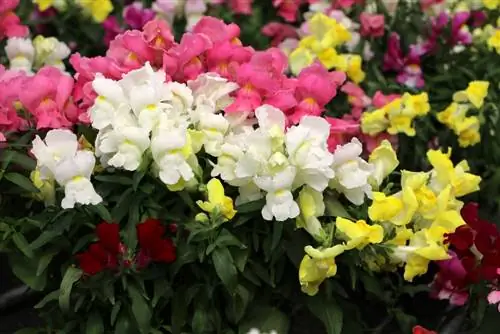
Anyone who fertilizes their plants usually means well with them. However, for successful wintering, you should stop applying fertilizer to the snapdragons in September. This reduces the growth drive and the plant matures and prepares itself for winter rest. Particularly susceptible new shoots on branches and roots are no longer formed.
Unearth
We hear again and again that in particularly cold locations, snapdragons can be dug up along with their root ball and overwintered in the cellar. This method actually works, but the plants are significantly weakened and react the following year with less growth and fewer flowers. When storing in the cellar, pay attention to the following:
- Keep roots moist, if necessary protect against intensive evaporation
- Avoid waterlogging, e.g. by placing it on straw
- Store in the dark, otherwise higher temperatures will cause growth to begin without sufficient supply



